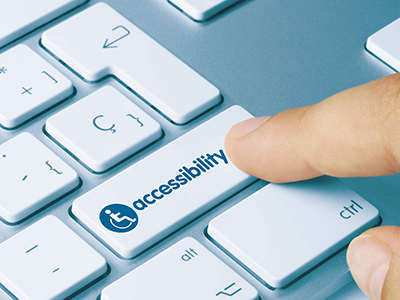 |
Trust-Based Animal Training - Elephants |
2.00 |
Managing elephants with a trust-based system in a way that helps to protect animal care staff from injury is the trend among accredited zoological organizations. This program offers the experience and expertise of San Diego Zoo Global animal behavior experts who have used this method for more than a decade to work with elephants during a variety of situations including new arrivals, reproduction, birth, and medical procedures. You will learn the basics of operant conditioning and how this is applied to elephant management with positive reinforcement techniques. Facility needs, management, and animal training are also addressed. |
 |
Budgeting: Manufacturing Budgets |
0.50 |
Manufacturing budgets outline and plan the expenses that a company undertakes to manufacture its products. Until products are sold, the cost of producing them is considered part of the company’s assets as inventory. Generally, you would not consolidate these expenses with non-manufacturing budgets in the master budget. |
 |
Grasslands: North America's endangered ecosystem |
1.00 |
Many impressive conservation examples can be observed across North America. Millions of acres of marine, river, and land ecosystems have been protected, but the necessity to protect grasslands is growing as our cities and food demand expand. This seminar will review the variables threatening this important ecosystem, its role on modern society, and some of the efforts to protect and restore it. |
 |
Environmental Systems |
2.00 |
Many of the animals exhibited in zoos and aquariums have very specific environmental requirements that must be met in order to support the life form and better ensure its welfare. This course will explore the unique biological, physiological, and welfare requirements of several varied types of animals; their unique requirements; and the implications for the provision of these requirements. |
 |
Pain Self Management |
1.00 |
Many older adults suffer from pain that is so bothersome it interferes with their daily activities. Often the pain is chronic, sometimes persisting for many months or even years, and is associated with depression, isolation, and decreased quality of life. This program covers five techniques that can be helpful in taking the edge off of pain to improve life quality. While this presentation is designed for home health aides, nursing assistants, and personal care aides, any member of the care team (including families!) can help older adults learn these strategies to help control their pain.
Presenter Katherine Beissner is Professor of Physical Therapy, and Gerontology Institute Fellow at Ithaca College. Her primary clinical interest is the improvement of function in older adults. Recent research has focused on the impact of using pain self-management strategies on the function, activity level, and quality of life of older adults. |
 |
Cultural Competence: Diversity, Identity, and Engagement |
2.00 |
Many programs engage children, youth, families, and staff from diverse cultural backgrounds. In order to best serve their community, out-of-school time program staff need to develop the vocabulary and skills to engage with people from different cultures. During this course, participants will explore how culture can impact and shape individuals, examine their own cultural identities and how these identities may impact their interactions with others, and levels of engagement with diverse groups. |
 |
Communications for EMS Providers |
1.00 |
Many providers view EMS Communications as the most basic of topics. At the same time, some experienced providers see this as one of the most in-depth issues that they may come across. How do you view the topic of EMS Communications? It is difficult to find a provider with a rich background in EMS Communications that John Merklinger brings to the table. His knowledge of the industry and his ability to breakdown complex issues makes this large topic very easy to digest.
Final Exam: This multiple-choice exam is designed to test your knowledge of the material you just reviewed. You have two attempts to gain an 70% or higher on this exam. Please take your time and answer each question carefully. |
 |
Accessible Instructional Materials (AIM) |
1.00 |
Many students with disabilities have difficulty with standard materials, seeing them, manipulating them, or decoding or comprehending them. These students need accessible instructional materials (AIM) in order to access the general education curriculum.
This course is all about accessible instructional materials. This course will help you develop new knowledge about students and will help you understand your role in assisting students that need to use these materials. |
 |
Conducting Meetings: Fundamentals of Conducting Meetings (Instructor Guide) |
0.67 |
Meetings allow groups to function, define goals, contribute to participants’ morale and status, as well as develop organizational culture. During meetings, participants are able to exchange information and update one another on current events. When information is shared among participants, they are able to work together to create ideas and solutions, and make decisions to progress toward the group’s goals.
In order for a group to function effectively, participants must be working toward accomplishing a common goal. Meetings allow participants to define goals as a group, which helps them agree on the terms of the goals, such as how and when they’ll be accomplished.
When the meeting leader encourages input from participants, employee morale increases. Encouraging communication satisfies the participants’ desire to play an active role in the organization. When participants understand that their opinions are valued, they feel that they’ve contributed to their organization.
Meetings also help develop the organization’s culture when meeting leaders demonstrate the values and attitudes preferred by the organization. Leaders display organizational values in meetings to reinforce the behavior they desire from participants.
In this course you will learn to: identify the benefits, types and misconceptions about meetings, plan a meeting, participate in a meeting, and close a meeting.
This Instructor's Edition of this course includes notes and suggestions to assist you in presenting the material, whether in an in-person classroom setting, or as an instructor-led online or distance-learning course. It also provides you with the answers to questions found in mid-lesson activities, as well as in the quiz that concludes the course. |
 |
Conducting Meetings: Fundamentals of Conducting Meetings |
0.67 |
Meetings allow groups to function, define goals, contribute to participants’ morale and status, as well as develop organizational culture. During meetings, participants are able to exchange information and update one another on current events. When information is shared among participants, they are able to work together to create ideas and solutions, and make decisions to progress toward the group’s goals.
In order for a group to function effectively, participants must be working toward accomplishing a common goal. Meetings allow participants to define goals as a group, which helps them agree on the terms of the goals, such as how and when they’ll be accomplished.
When the meeting leader encourages input from participants, employee morale increases. Encouraging communication satisfies the participants’ desire to play an active role in the organization. When participants understand that their opinions are valued, they feel that they’ve contributed to their organization.
Meetings also help develop the organization’s culture when meeting leaders demonstrate the values and attitudes preferred by the organization. Leaders display organizational values in meetings to reinforce the behavior they desire from participants.
In this course you will learn to: identify the benefits, types and misconceptions about meetings, plan a meeting, participate in a meeting, and close a meeting. |











